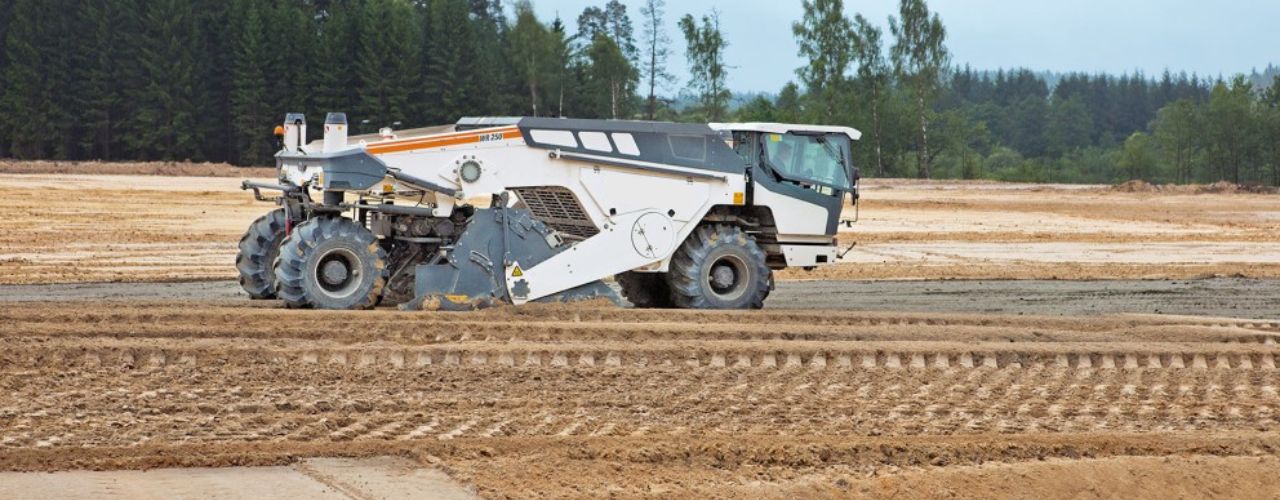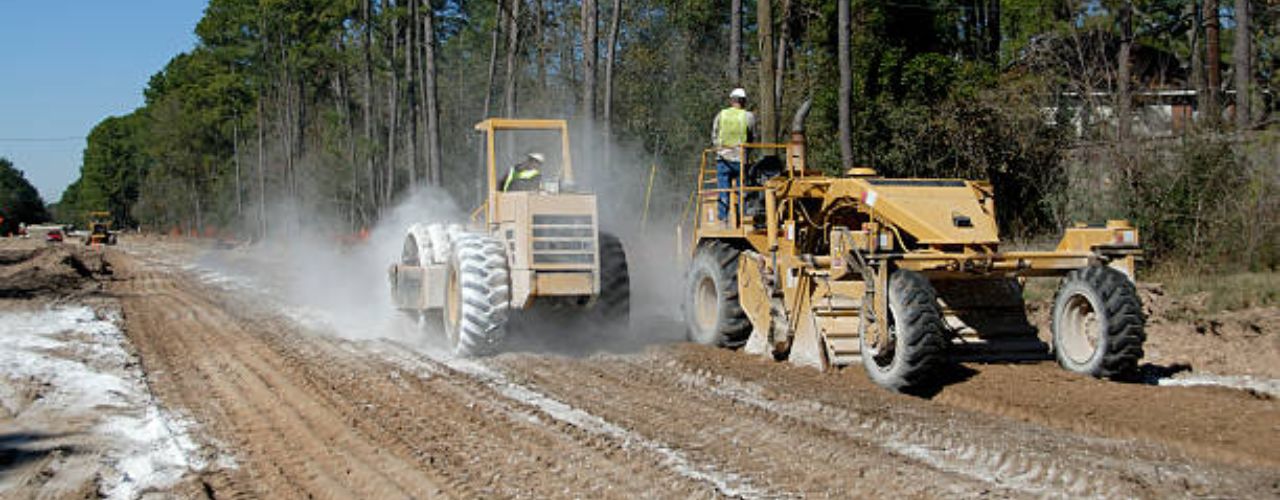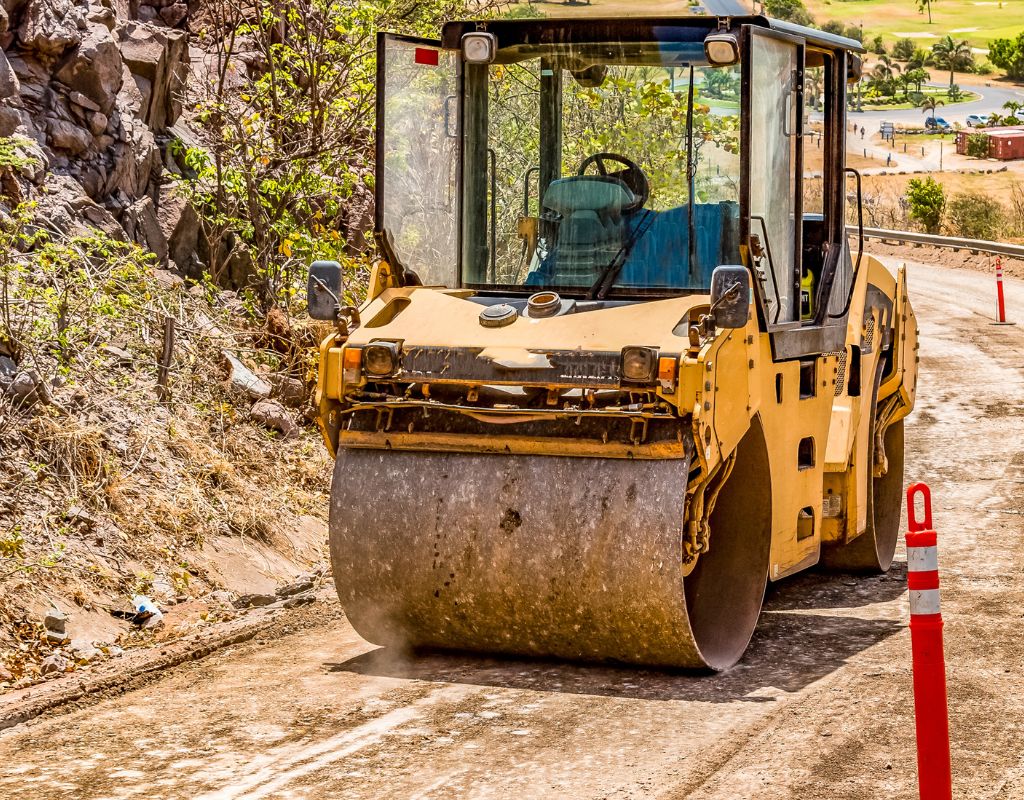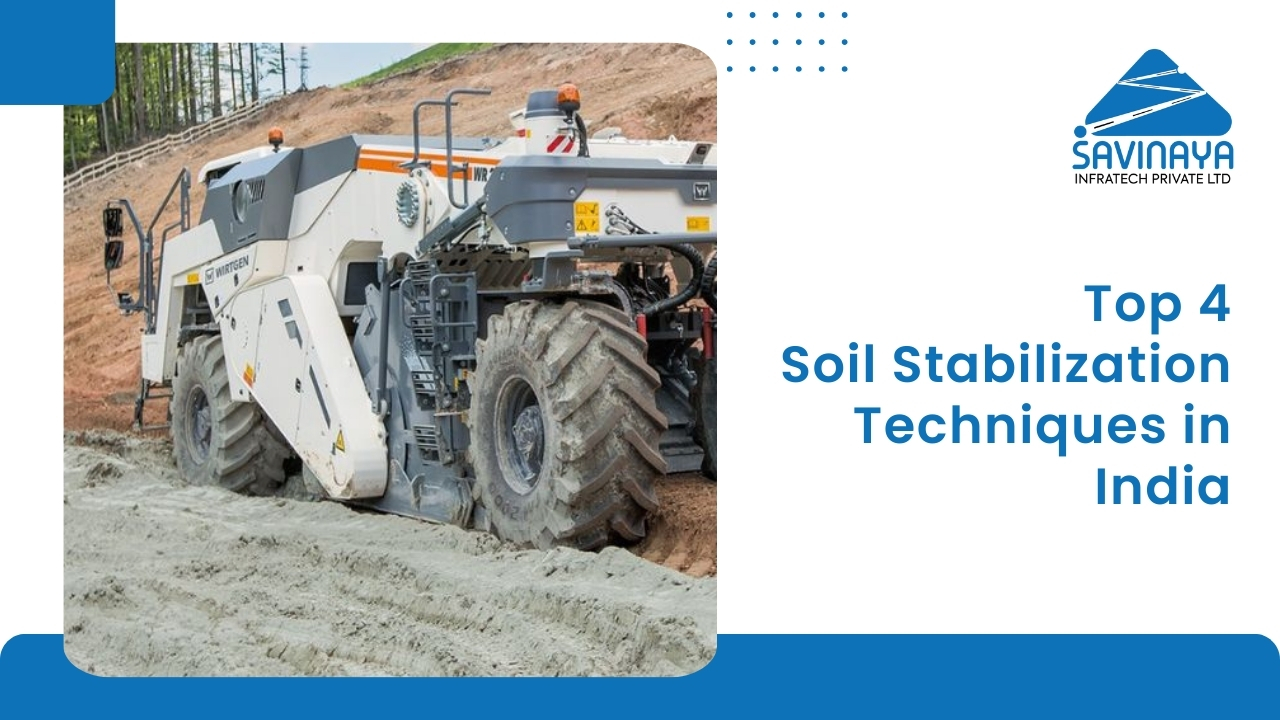
SOIL STABILISATION
ISO 9001:2005 Certified


Soil Stabilisation is a geotechnical engineering technique that aims to improve the mechanical properties of soil, making it more stable and suitable for construction purposes. The goal of soil stabilisation is to enhance the strength, durability, and load-bearing capacity of the soil, reducing the risk of settlement, slope failure, and other geotechnical issues.
Soil Stabilisation is commonly used in a wide range of applications, including road construction, foundation construction, embankments, and land reclamation, to ensure that the soil can safely support the intended structures or infrastructure.
Benefits of Soil Stabilisation:
At Savinaya Infra, we use various methods for soil stabilisation, including the addition of chemicals, cementitious materials, or other binders to the soil, as well as mechanical techniques such as compaction or densification. Additionally, we also play a key role in selecting and implementing the appropriate soil stabilisation methods based on site-specific conditions and project requirements.
Increased Stability
Soil stabilisation helps increase the stability of the soil, reducing the risk of erosion, landslides, and other types of soil failures. This can be especially beneficial for projects such as road construction, where stability is crucial for safety and longevity.
Improved Durability
Soil stabilisation also helps improve the durability of the soil, making it more resistant to wear and tear. This can help reduce the need for costly repairs and maintenance in the future.
Environmentally Friendly
Soil stabilisation is an environmentally friendly solution, as it does not require the removal or replacement of soil. By stabilising the existing soil, it can help reduce waste and minimise the impact on the surrounding environment.
Reduced Cost
Soil stabilisation can be a cost-effective solution for soil-related problems, compared to other methods such as excavation or replacement. By improving the stability and durability of the soil, it can help reduce the need for expensive repairs and maintenance in the long term.
Customised Solutions
At Savinaya Infra, we offer customised soil stabilisation solutions based on the specific needs of your project. We work closely with our clients to design and implement solutions that meet their unique requirements, using a variety of techniques and materials.
Enhanced Load-Bearing Capacity
Stabilising the soil can help increase its load-bearing capacity, allowing it to support heavier loads without the risk of failure. This can be particularly useful for construction projects that require a strong foundation.
why choose savinaya infratech
Personalised Attention
At Savinaya Infratech, we treat every project as unique. Our team offers tailor-made geotechnical engineering solutions, ensuring that each recommendation is aligned precisely with your site's specific conditions and project goals.
Honest and Appropriate Solutions
We don’t believe in overengineering or overselling. What we offer is grounded in experience, real site data, and long-term thinking. If a simpler, safer, more cost-effective approach works, that’s what you’ll get. We’re here to solve problems, not create new ones.
Safety First
Every decision we make is guided by safety standards. That includes the safety of your team, our crew, the surrounding area, and future users of the site. We follow strict safety standards, not just because we have to, but because we believe it’s the right thing to do.
Uncompromised Quality
As a trusted partner on national highway and mining projects, Savinaya Infratech delivers industry-leading geotechnical engineering services. Every structure we create stands as a testament to durability, precision, and quality excellence.
FAQ's
The cost really depends on a few key factors — like the size of the site, the type of soil, and which stabilisation method is best suited for the job. We don’t believe in one-size-fits-all pricing. Instead, we offer customized quotes that balance performance, durability, and cost-efficiency for your project.
Every site is unique, and so is its soil. Our team begins by conducting a thorough site assessment and geotechnical analysis. Based on the results, we recommend the most suitable approach — whether it’s mechanical, chemical, or a more advanced method like soil nailing techniques. The goal is always to match the right solution to your ground conditions.
Yes, absolutely. We’ve worked on all kinds of infrastructure projects — from high-speed highway expansions to heavy-load industrial layouts and railway embankments. Our team is equipped with the experience and tools to take on large-scale soil stabilization work with confidence and precision.
Project timelines can vary depending on soil conditions, site access, and overall scope — but we always aim to move efficiently. Most projects are completed within a few days to a few weeks. From planning to execution, we keep things on schedule without cutting corners.
Yes, we do. From the first soil test to the final layer of protection, we handle everything in-house. Our end-to-end service includes design, materials, execution, and quality control — so you can relax knowing the entire project is in good hands.
Getting started is easy. You can easily contact us through our website or speak with our team directly by phone.We’ll gather some basic details and, if needed, schedule a site visit. After that, we’ll send you a clear, no-obligation quote that outlines the best solution for your needs.
Yes — and we consider it one of the most important steps. Our in-house geotechnical engineers conduct detailed soil tests to understand moisture levels, strength, and other critical factors. Only then do we recommend a tailored stabilization plan that’s backed by real data.
We know that timelines matter and quick action can make all the difference. Depending on your location and urgency, we can usually arrange a site visit within just a few working days. Our team is flexible and responsive — we show up ready to get to work.
Delivering top-quality results is what we strive for. Throughout the project, we follow strict procedures — including testing materials, monitoring application methods, and conducting regular inspections. You’ll know exactly what’s happening at each stage, and we don’t sign off until the job meets our standards (and yours).
Yes, we do. While our stabilisation techniques are built for long-term durability, we’re happy to provide ongoing support if needed. Whether it’s routine checks or minor touch-ups, we’re here to make sure your ground stays solid and reliable.



